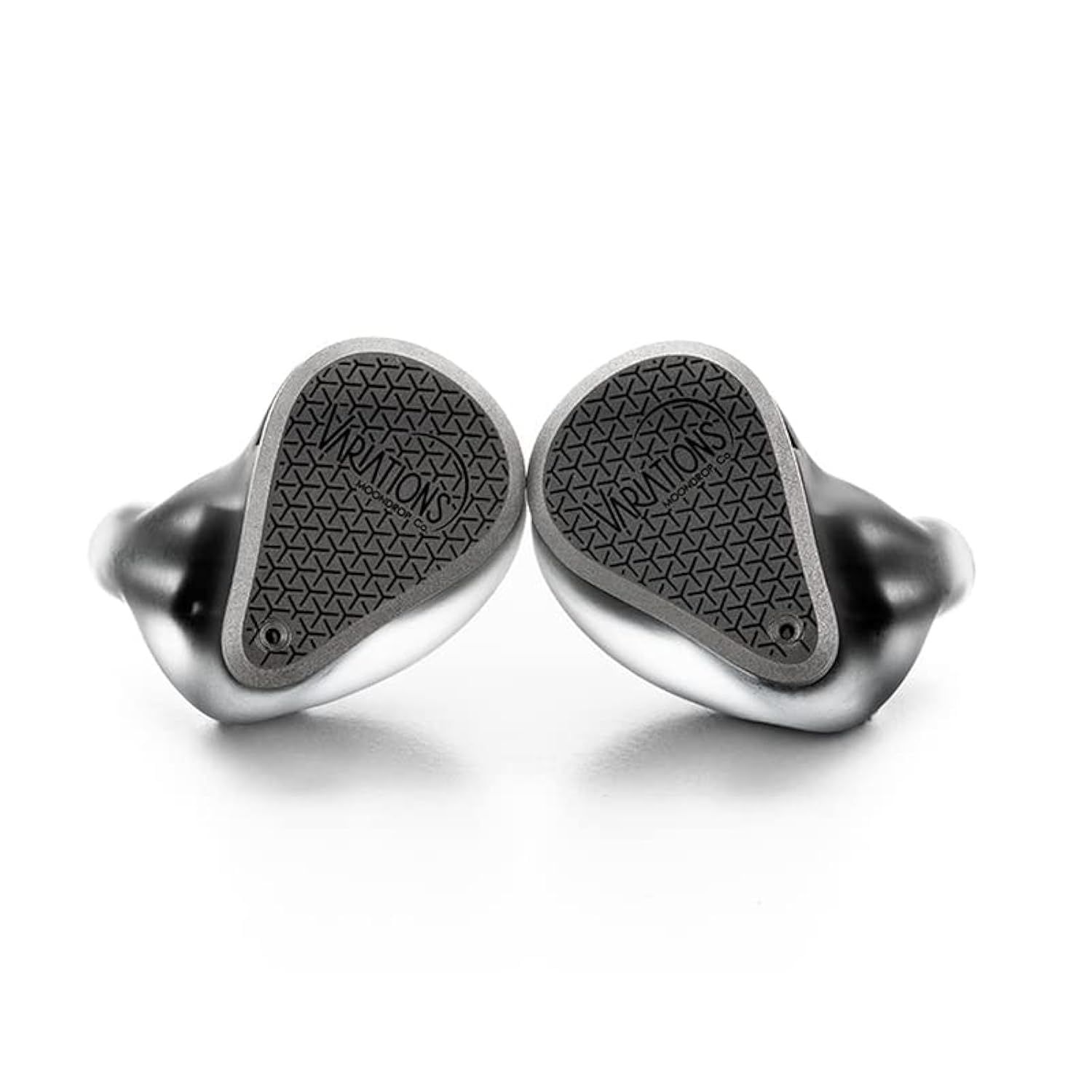FH7vs.Variations
Sound & Specs Comparison
Information
Both IEMs are widely regarded in the audiophile community. See how they differ in terms of sub-bass response, upper mids, clarity, and overall tonality. Spider charts and rating breakdowns included.
Objective Comparison
Facts, details, stuff.
| General Info | FH7 | Variations |
|---|---|---|
| Brand | FiiO | Moondrop |
| Country | China | China |
| IEM Description | The FiiO FH7 is a flagship hybrid IEM that pairs a 13.6 mm Dynamic Driver with four Balanced‑Armature drivers in a 4‑way crossover. Housed in lightweight aluminum‑magnesium alloy shells and paired with a detachable silver‑plated OFC cable, it offers secure comfort and easy cable swaps. Sonically, it delivers punchy, textured bass, warm, natural mids and a smooth yet detailed treble extension. The kit includes multiple silicone and memory‑foam tips plus a premium carry case for on‑the‑go listening. | Moondrop Variations is a hybrid in-ear monitor combining electrostatic, balanced armature, and dynamic drivers for a precise and immersive listening experience. Known for its balanced, reference-style tuning with tight bass, clean mids, and extended treble, it’s a favorite among audiophiles who crave clarity and technical performance. Ideal for detail lovers and those seeking a high-fidelity sound signature. |
| Price Level | 100 – 500 | 500 – 1.000 |
| Housing & Driver | ||
|---|---|---|
| Driver Config | Hybrid | Tribrid |
| Driver Types | Dynamic Driver + Balanced Armature | Dynamic Driver + Balanced Armature + Electrostatic |
| Shell Material | aluminum‑magnesium alloy | Copper |
| Cable | silver‑plated OFC cable | – |
| Technical | ||
|---|---|---|
| Freq Range | 5 Hz – 40 kHz | 9-40,000 Hz |
| Impedance (Ω) | 16 | – |
| Sensitivity (dB) | 111 | – |
| Crossover | 4‑way crossover | – |
| Platform Info | ||
|---|---|---|
| Comments | 2 | 1 |
| Visit Count | 124 | 91 |
| External Reviews | 1 | 3 |
Meta Ratings
FH7 reveals microdetails and transient responses with evidently better articulation, helping listeners uncover nuances often missed with Variations. For comfort fit, It performs evidently better (8 vs 7). Even under close inspection, It maintains a significantly cleaner, more seamless design — whereas Variations occasionally reveals minor imperfections. Users may find the It cable notably more confidence-inspiring for both daily use and long-term durability. Regarding included accessories, It offers a notably more complete and useful package, which may include additional tips, a better case, or enhanced extras.
| FH7 | Variations | |
|---|---|---|
| Sound | 7.5 | 6.5 |
| Comfort Fit | 8.0 | 7.0 |
| Build Quality | 8.5 | 6.5 |
| Stock Cable | 8.0 | 5.5 |
| Accessories | 8.5 | 6.0 |
Sound Characteristics
Low-frequency extension on Variations feels s more natural and authoritative, while FH7 lacks some reach (6.5 vs 6). FH7 enhances basslines with a more energy and grip, giving them a livelier feel compared to Variations (7 vs 6.5). The bass in It feels a more physical and textured, with improved rumble and body compared to Variations (9 vs 8.5). The lower midrange on It blends a more smoothly into the bass region, avoiding the disconnect found in Variations (10 vs 7.5). Variations offers s greater shimmer and nuance in the lower treble, revealing micro-details that FH7 misses (7.5 vs 7). FH7 extends a further into the upper treble, adding air and openness that Variations lacks (10 vs 8). It creates a a wider soundstage, giving instruments more space and a better sense of placement than Variations (9 vs 7.5). With a higher resolution, It allows finer textures and room ambiance to shine more than Variations (9 vs 8). In complex arrangements, It separates layers a more distinctly, preventing overlap that Variations occasionally suffers (7.5 vs 7). Instruments remain intelligible on It even during busy sections, showing m better handling of masking than Variations (9 vs 7). Notes played through Variations feel a weightier and fuller, giving a more satisfying impact than those from FH7 (8 vs 7). It hits with overwhelmingly more authority during transients, creating a more explosive effect than FH7 (8.5 vs 3). The upper range of vocals is m cleaner and more forgiving on It, helping it avoid sibilant harshness that FH7 shows (9 vs 7.5). Timbre on FH7 sounds a more realistic and natural, whereas Variations feels slightly more artificial or colored (9 vs 7.5). Across the frequency range, It stays d more consistent in tonal balance, resulting in a smoother listen than Variations (9 vs 7). It portrays textures in vocals and strings with a more realism, enhancing emotional depth over Variations (9 vs 7.5).
| FH7 | Variations | |
|---|---|---|
| Sub Bass | 6.0 | 6.5 |
| Bass | 7.0 | 6.5 |
| Bass Feel | 9.0 | 8.5 |
| Lower Mids | 10.0 | 7.5 |
| Upper Mids | 8.0 | 8.0 |
| Lower Treble | 7.0 | 7.5 |
| Upper Treble | 10.0 | 8.0 |
| Sound Stage Width | 9.0 | 7.5 |
| Detail | 9.0 | 8.0 |
| Layering | 7.5 | 7.0 |
| Masking | 9.0 | 7.0 |
| Note Weight | 7.0 | 8.0 |
| Slam | 3.0 | 8.5 |
| Sibilance | 7.5 | 9.0 |
| Timbre Color | 9.0 | 7.5 |
| Tonality | 9.0 | 7.0 |
| Texture | 9.0 | 7.5 |
Tonal Signature
// Nothing to compare yet.

